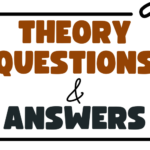The content is just an excerpt from the complete note for SS1 First Term Data Processing Lesson Note – History of Computing. Check below to download the complete DOCUMENT
WEEK ONE
TOPIC: History of Computing
CONTENT:
- Concrete devices in computing
- Number system
SUBTOPIC 1: History of Computing
Computers are affecting every sphere of human life and bringing about many changes in research, industry, education, government, scientific medicine, law and social sciences and even in arts like music and painting.
The history of computing is longer than the history of computing hardware and modern computing technology and includes the history of methods intended for pen and paper or for chalk and slate with or without the aid of tables.
Concrete Devices in computing
Concrete computing is intimately tied to the representation of numbers. But long before abstractions like the number arose, there were mathematical concepts to serve the purpose of civilization.
Tally Stick
This was an ancient memory aid device to record and document numbers, quantities or even messages. Tally sticks first appear as notches carved on animal bones, in the Upper Paleolithic Age. E.g., Ishango Bone
Types /Kinds of Tally Stick
There are two different kinds of tally sticks, the single and the slit tally
Single tally: This was an elongated piece of bone, ivory, wood or stone which is marked with a system of notches (like Tally marks).
Split tally: The split tally was a technique which became common in medieval Europe, which was constantly short of money (coins) and predominantly illiterate, in order to record bilateral exchange and debts. A stick (squared Hazelwood sticks were most common) was marked with a system of notches and then split lengthwise. This way the two halves both record the same notches and each party to the transaction received one half of the marked stick as proof.
To gain full access to the note: DOWNLOAD FILE




